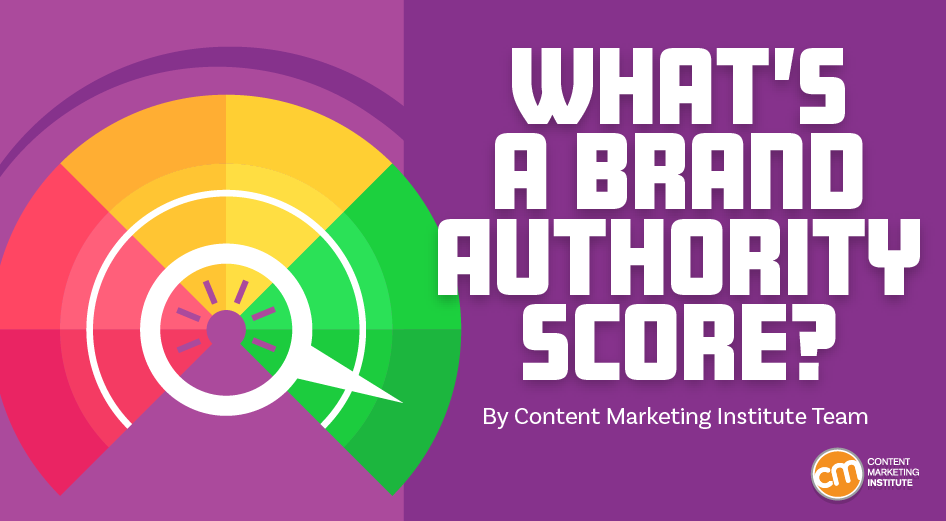
If you could magically transform your brand’s value to be the same as another, which company would you choose?
This week, Moz launched a new value metric – Brand Authority. The SEO and marketing software company says it’s the “first-to-market metric to measure brand strength and salience.”
CMI’s chief strategy advisor Robert Rose discusses value metrics in light of Moz’s Brand Authority score. Watch it below, or keep reading for the highlights:
Though Moz doesn’t say it explicitly, the brand authority metric measures the strength of the brand being discussed and/or its prominence in broader conversations online using a scale of zero to 100. The number measures popularity, so theoretically, the most hated brand in the world would score well.
@Moz’s new Brand Authority score measures the popularity of the brand’s online presence, says @CMIContent via @Robert_Rose. Click To Tweet
What brand metric number really matters?
Moz says this score views the brand’s online value through the lens of search engines, which makes sense, given what Moz does. “Users can assess their marketing gaps to maximize their return on investment and see the true value of sales prospects and potential acquisition targets and assess the real influence of the media brands that pick up their stories,” the company said in the announcement.
While Robert agrees with that explanation, he has another thought. “The score itself is much less interesting than the score’s movement over time in relation to the brand’s efforts,” he says.
A brand’s new authority score from @Moz will be most interesting as it moves over time, says @Robert_Rose via @CMIContent. Click To Tweet
Who’s at the top of what matters?
Moz released the top 500 brands based on their Brand Authority metric. Given the score measures popular discussion, the probably unsurprising top 10 include Google, YouTube, Facebook, Amazon, Walmart, Target, Yahoo, Home Depot, Walgreens, and Fox News.
How does that list compare to other measures of brand value?
Kantar’s most valuable brands based on financial valuation include a couple of the same names at the top – Google and Amazon. But different companies also show up – Apple, Microsoft, McDonald’s, Visa, Tencent, Louis Vuitton, MasterCard, and the brand that’s been there forever, of course, Coca-Cola. Interestingly, Apple barely makes the top 20 in Moz’s brand authority list, and Coca-Cola doesn’t crack the top 500.
Of the 10 most financially valuable brands, only @Google and @Amazon also appear on @Moz’s brand authority list, says @CMIContent via @Robert_Rose. Click To Tweet
Morning Consult issues a most trusted brands list. In 2023, its top 10 trusted brands are Band-Aid, UPS, Amazon, Lysol, Kleenex, Cheerios, Visa, Dove, The Weather Channel, and FedEx. Only Amazon and FedEx even make Moz’s list of 500.
Now, let’s look at a list of the most distrusted or hated brands based on reputation, as identified in a recent poll by Axios and Harris. Among those who appear on both this list and Moz’s are Meta/Facebook, Spirit Airlines, and Twitter (now X).
“It just goes to show that your brand may have a lot of financial wealth and be part of the discussion, but it might just be on the wrong end of that discussion,” Robert says.
What values are important to your brand?
Brand value is highly subjective. It’s most accurately measured across multiple attributes, including financial, trust, and popularity. As marketers and stewards of the brands, you help orchestrate – because you can’t control it – the perceptions of your brand over time. They are the sum of promises kept – the spaces in which your customers create their value and look at you in a different way.
Moz’s new Brand Authority score certainly seems to offer marketers a useful tool to measure their efforts to move the brand. But the one thing to keep in mind is that an increase in score may not be the right goal.
What do you think? What values are most important to your organization? Financial? Customer trust? Awareness? Popularity? Or is it something else? Let us know in the comments.
HANDPICKED RELATED CONTENT:
Cover image by Joseph Kalinowski/Content Marketing Institute




